by Deep Green Resistance News Service | Nov 22, 2016 | Strategy & Analysis
Trump’s election has sabotaged any prospect of reigning in the global warming crisis
by Max Wilbert / Deep Green Resistance
On Tuesday night, the American people decided to elect Donald J. Trump, a billionaire business mogul and reality TV star who has been accused of raping or otherwise sexually assaulting twenty-three women, who has called for banning immigration to the United States, and who has built a campaign on virulent racism.
He received more than 60 million votes.
There is a lot to process. Those conversations, about the growing tide of white supremacy, about Trump’s pending sexual assault cases, about the fact that Hillary Clinton won the popular vote, about the left’s failure to engage with the white community on issues of race, and about the gerrymandering and voter disenfranchisement that characterizes the American system, are already taking place.
I want to focus here on one specific issue: global warming. As I’m writing this, I’m sitting in the sun outside my home. It’s November, and temperatures are more than 20 degrees above the typical average here. This year, 2016, is predicted to be the hottest year on record, beating out last year, which beat out the previous year, which beat out the previous year, each of the last five setting a new mark.
Records are being smashed aside like bowling pins. We are in the midst of a global catastrophe, and it is even worse than previously thought. On the day after the election, news broke that the climate is more sensitive to global warming than most calculations had suspected.
The study in question predicted nearly double the warming that the Intergovernmental Panel on Climate Change (IPCC) had previously expected. The new data predicts between 9 and 14 °F warming by 2100, enough to potentially lead to the extinction of the human species and flip the Earth into a completely new regime more similar to Venus than Earth. Michael Mann, one of the most well-known climate scientists in the world, says these findings and the changing political situation may mean “game over for the climate.”
Into this mess strides Donald Trump, who has said that if elected, he would “immediately approve” the Keystone XL pipeline, roll back environmental regulations, further subsidize the fossil fuel industry, and back out of the Paris climate agreement. Coal and oil stocks, as well as shares of equipment companies and railroads, jumped in price after news of his victory hit.
 Right now, thousands of native people and allies are gathering on the cold plains of North Dakota in an attempt to stop the Dakota Access Pipeline. Under President Obama, such popular movements had a chance—a small chance, but a chance—of success. Under Trump, there won’t be so much leniency, and the road to victory will be much harder.
Right now, thousands of native people and allies are gathering on the cold plains of North Dakota in an attempt to stop the Dakota Access Pipeline. Under President Obama, such popular movements had a chance—a small chance, but a chance—of success. Under Trump, there won’t be so much leniency, and the road to victory will be much harder.
History is clear; social movements have generally flourished under slightly more progressive administrations, and waned under right wing leadership. What does this mean for our strategy?
I would like to have a peaceful transition to a sane and sustainable world, but it seems increasingly impossible. The American people have shown themselves to be a reactionary force, clinging to their privilege as if it can shield them against the arrows that originate in American foreign policy. Immigrants come here because their lands have been destroyed for American capitalism, and groups like ISIS have emerged from a slurry of war, oil, racism, and fundamentalism.
Perhaps, then, we need a different type of change. When it comes to protecting the planet, stopping pipelines needs to be one of our first priorities. And like other Earth-destroying machinery, pipelines are very vulnerable. They stretch on for miles with no guards, no fences, and no protection.
Recently, a number of activists, including some who I know, were able to approach and shut down all five pipelines that carry tar sands oil into the United States in a coordinated act of non-violent civil disobedience. Their action was brave, but its long-term efficacy depends on whether courts will agree with them that their action was necessary and create a precedent to normalize actions of this type. With another Antonin Scalia on the way to the Supreme Court, a positive outcome is in doubt.
 Coordinated action of another type could be more effective in protecting the planet. In plain language, I speak of sabotage. Individuals or networks of people conducting coordinated, small-scale sabotage over a widespread area could cripple the fossil fuel system with a minimum of expense, technical expertise, personnel, and risk. It is simple to disappear into the night, and with proper security culture the possibility of capture is remote. We’ve seen how vulnerable this network is; anyone could do this.
Coordinated action of another type could be more effective in protecting the planet. In plain language, I speak of sabotage. Individuals or networks of people conducting coordinated, small-scale sabotage over a widespread area could cripple the fossil fuel system with a minimum of expense, technical expertise, personnel, and risk. It is simple to disappear into the night, and with proper security culture the possibility of capture is remote. We’ve seen how vulnerable this network is; anyone could do this.
It isn’t idle speculation that such attacks would have a substantial impact. Its actually been done before, most notably in Nigeria, where indigenous people in the Niger River Delta have risen against polluting oil companies many times over the past several decades. Most recently, attacks on oil pipelines earlier this year shut down some 40 percent of Nigeria’s oil processing. Months later, the oil industry still hasn’t recovered.
To many people, this plan will sound insane. Modern life is dependent upon oil in so many ways. But when oil is killing the planet and those in power will not respond to rational argumentation or peaceful protest, and when sixty million people are willing to vote a climate-denying sexual abuser into office, what options are we left with? It is time for serious escalation.
Max Wilbert is a writer, activist, and organizer with the group Deep Green Resistance. He lives on occupied Kalapuya Territory in Oregon.
To repost this or other DGR original writings, please contact newsservice@deepgreenresistance.org
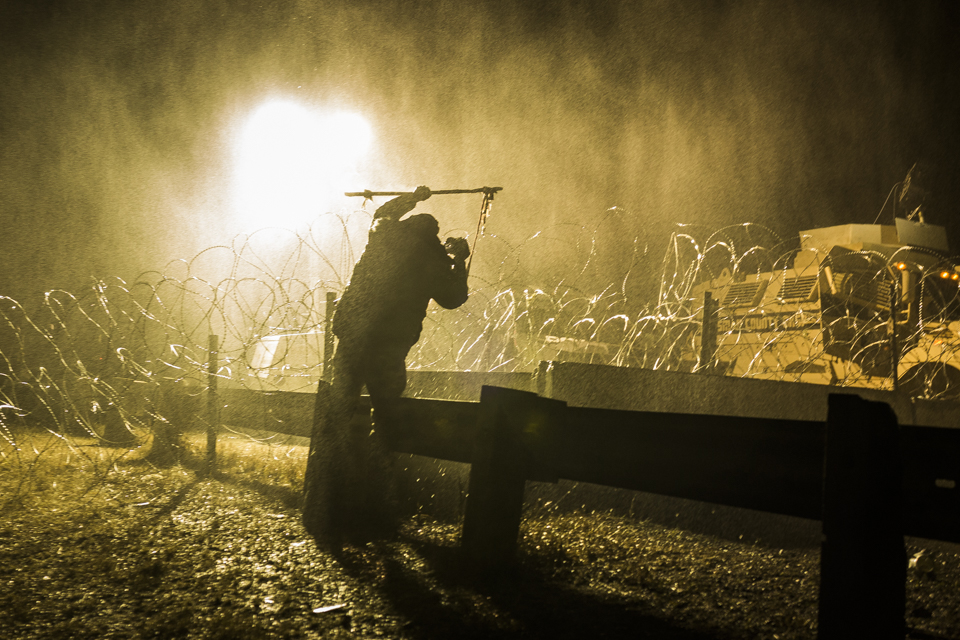
by Deep Green Resistance News Service | Nov 21, 2016 | Obstruction & Occupation, Repression at Home
by Indigenous Environmental Network
Cannon Ball – On November 20th at approximately 6PM CST over 100 Water Protectors from the Oceti Sakowin and Sacred Stone Camps mobilized to a nearby bridge to remove a barricade that was built by the Morton County Sheriff’s Department and the State of North Dakota. This barricade, built after law enforcement raided the 1851 treaty camp, not only restricts North Dakota residents from using the 1806 freely but also puts the community of Cannon Ball, the camps, and the Standing Rock Tribe at risk as emergency services are unable to use that highway.
Water Protectors used a semi-truck to remove two burnt military trucks from the road and were successful at removing one truck from the bridge before police began to attack Water Protectors with tear gas, water canons, mace, rubber bullets, and sound cannons.
At 1:30am CST the Indigenous Rising Media team acquired an update from the Oceti Sakowin Medic team that nearly 200 people were injured, 12 people were hospitalized for head injuries, and one elder went into cardiac arrest at the front lines. At this time, law enforcement was still firing rubber bullets and the water cannon at Water Protectors. About 500 Water protectors gathered at the peak of the non-violent direct action.
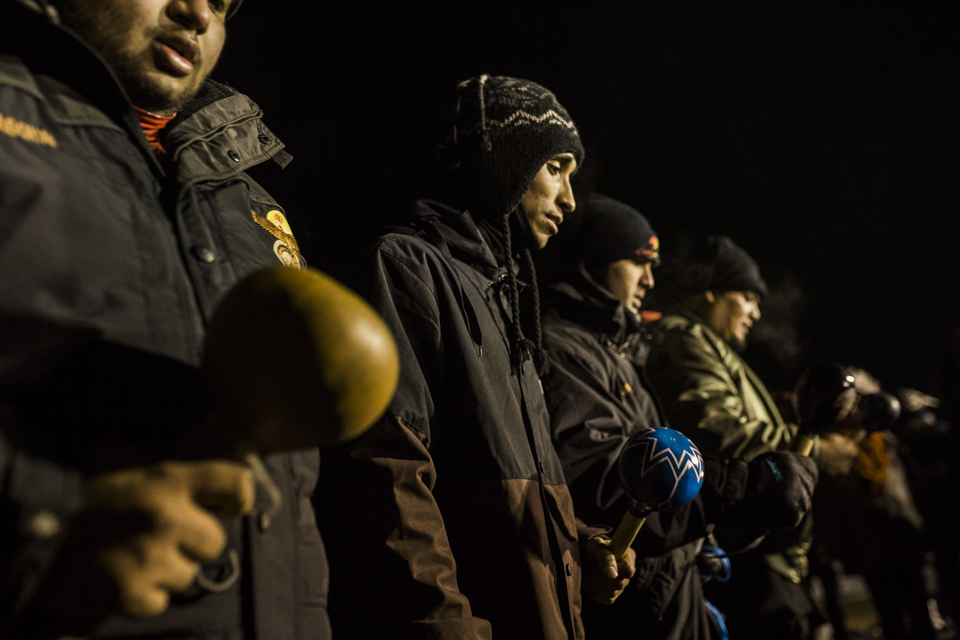
The following is a statement from the Indigenous Environmental Network:
“The North Dakota law enforcement are cowards. Those who are hired to protect citizens attacked peaceful water protectors with water cannons in freezing temperatures and targeted their weapons at people’s faces and heads.
“The Morton County Sheriff’s Department, the North Dakota State Patrol, and the Governor of North Dakota are committing crimes against humanity. They are accomplices with the Dakota Access Pipeline LLC and its parent company Energy Transfer Partners in a conspiracy to protect the corporation’s illegal activities.
“Anyone investing and bankrolling these companies are accomplices. If President Obama does nothing to stop this inhumane treatment of this country’s original inhabitants, he will become an accomplice. And there is no doubt that President Elect Donald Trump is already an accomplice as he is invested in DAPL”.
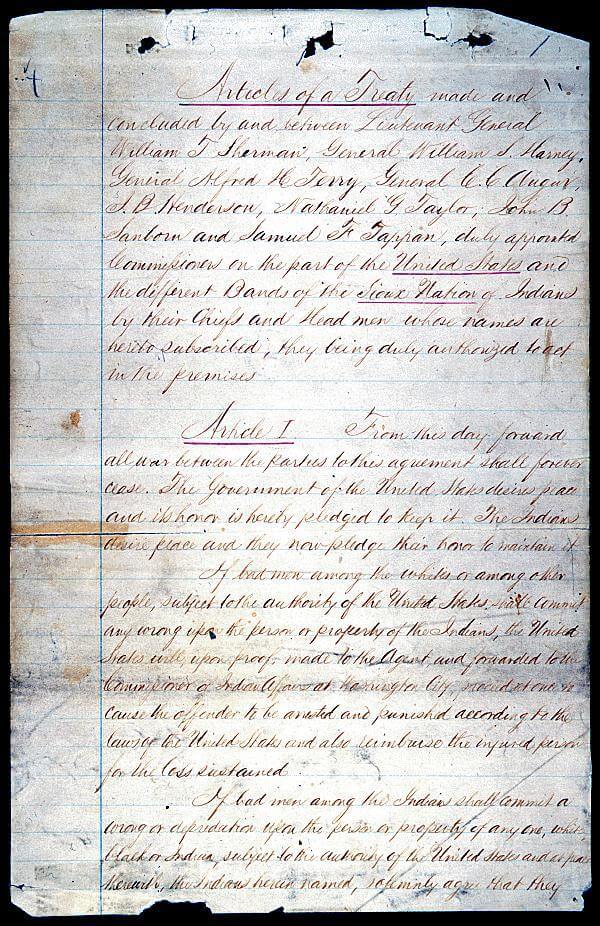
by Deep Green Resistance News Service | Nov 15, 2016 | Colonialism & Conquest
If treaties are the supreme law of the land, as the U.S. Constitution states, then how is it that treaties can be so easily broken by a government that claims to uphold a respect for the law? An even more unsettling question: how is it that the trail of broken treaties has been able to span generations under an outdated, imperial logic unknown to the majority of the U.S. citizens? The founding of the United States is predicated on this painful contradiction between principles of equality and rule of law on one side, and the colonial appropriation of land from native peoples who have inhabited them for millennia, on the other.
The current resistance against the construction of the Dakota Access Pipeline (DAPL) is inscribed in this contradiction, making evident the non-rule of law when it comes to appropriating native lands.
The history of Standing Rock is marked by the history of colonization predicated on the Doctrine of Discovery. The progressive erosion of its Sioux territory goes hand in hand with the logic of terra nullius, which framed land in the Americas as “empty” in order to justify settler colonization.
The Sioux Nation has historically engaged in sovereign government-to-government relations with the US government. The first treaty in which the two parties engaged as diplomatic equals was the Treaty of Fort Laramie of 1851. It was the U.S. government who sought the treaty to allow for safe passage of the influx of settlers travelling west through Sioux territory during the Gold Rush from the east coast to California.
The process of negotiating the Treaty of Fort Laramie followed the colonial settler standard used in contemporary treaty negotiations. While the process was equal in theory to the traditional communal decision-making processes under which many Native Nations operated, the colonial method, which uses elected representatives, heavily favored the interests of the colonial government. Ultimately, the treaty established distinct territories for just under 10 Great Plain tribes. The treaty also permitted settlers to travel on the Platte River Road, achieving the U.S. government’s goal.
The 1851 treaty defined Sioux territory as the land where the DAPL is now being constructed. The territory fell within the western half of modern South Dakota, northwest Nebraska, a portion of northeast Wyoming, and a small part of southeast Montana and southwest North Dakota.
From the very beginning, various parties continuously broke the Treaty of Fort Laramie. Many tribes, unaware of the existence of the treaty, continued to carry out raids on tribes on legally different territories. Furthermore, settlers increasingly trespassed into the treaty territories, disrupting the buffalo hunting grounds of Native Nations. The settlers’ wrongful presence on native land led to various hostile skirmishes and bloody battles in which natives were massacred often without provocation.
But the violation of the Treaty of Fort Laramie didn’t stop there. Over the years, the U.S. government has continued to appropriate Sioux land in an ongoing process of colonization that disregards the treaty. (See map.)
In 1861, the discovery of gold in present-day Montana accentuated the flood of fortune-seekers overrunning Sioux lands in violation of the decade-old Laramie Treaty. Sioux protests to defend their rights and territory were ignored, so the Sioux took matters into their own hands to stop the trespassers. The U.S. responded by sending in a military presence.
Instead of adhering to the terms of the treaty, the U.S. government attempted to negotiate another treaty more preferential to its interests. Treaty making, instead of a diplomatic engagement between two equally powerful sovereign nations had turned into a destructive means of grabbing land and resources from native people; a form of “conquest by law” as per the book by Lindsay G. Robertson.
The result was a second treaty of Fort Laramie signed in 1868. This new treaty shrank the territorial boundaries of the Great Sioux Reservation in exchange for the U.S. federal government’s removal of all existing forts in the Powder River area, among other specifications. Yet it was a flawed treaty from the start. Most importantly, it stipulates that no changes can be made to the legally binding agreement unless ¾ of all adult Sioux males consent. Many members of the Sioux nation, particularly those within the boundaries of the territory signed the treaty. But many more bands residing north of the Bozeman Trail, such as the Hunkpapa and Sihasapa bands, did not. The treaty was not signed by three quarters of all adult Sioux males.
Yet, again, the U.S. government violated the treaty. The second Laramie treaty granted the tribes the right of regulating the entry of persons into their territory. Article II of the 1868 Treaty stipulates that nobody can enter the territory without tribal permission. But time and time again settlers have encroached on Sioux territory.
Some Americans may know that in 1874 the U.S. government sent George Custer with a group of scientists to search for natural resources, especially gold, in the isolated mountain range known today as the Black Hills. The gold they found led to an influx of miners, again in direct violation of the treaty.
Eventually, the U.S. government decided to pursue its strategy of land appropriation without bothering with the pretense of legality. The Sioux learned to be wary of treaties with the U.S. and refused to sign away their land.
In 1877, Congress unilaterally passed an act removing the sacred Black Hills from the Great Sioux Reservation, without the ¾ consent of the Sioux mandated by the Laramie Treaty of 1868. This illegal grab of sacred land brought no legal repercussions to the party that violated the treaty—the U.S. government.
In 1889, Congress again diminished the Great Sioux Reservation with the Dawes Act and Allotment Act, partitioning it into six sections, one of which was the Standing Rock Sioux Reservation. This opened up parts of the reservation to outside settlement, even though the native government still controls all reservation lands.
Sioux struggles for water are embedded in such displacements. In 1948, the U.S. government began construction of Oahe Dam, despite resistance from local tribes. Its creation flooded tribal land and forced a quarter of the reservation’s inhabitants to move.
In 1958, a federal court ruled that Lake Oahe was part of the Standing Rock territory according to the 1868 Fort Laramie Treaty. In this ruling the court said, “Where there is a treaty with Indians which would otherwise restrict the Congress, Congress can abrogate the treaty in order to exercise its sovereign right.” The court openly articulated the self-arrogated right of the U.S. government to go back on treaty obligations with Native Americans to unilaterally exercise its sovereign power.
The U.S. did just that, taking the Lake Oahe land from the Standing Rock tribe through legislation passed by Congress in September 1958 [Public Law 85-915].
Legal abrogation, or repealing legislation, dispenses with any idea of fair treaty making between equals. It undermines native sovereignty, following a racist logic of colonial elimination. It dispenses with numerous prior legal precedents that granted Native Americans some rights, such as the Indian Appropriations Act of 1871, which declared that no treaty obligation with an Indian nation before March 3, 1871 can be “invalidated or impaired.” It puts into question the idea of the “federal Indian trust responsibility,” articulated in the Seminole Nation v. United States case of 1942, which entailed an obligation on the part of the U.S. government to protect tribal treaty rights, land, assets and resources, per the Department of the Interior Indian Affairs branch.
As a federally recognized tribe, the Standing Rock Sioux Tribe is legally entitled to these obligations. However, as history has shown, U.S. principles and laws do not seem to have the same meaning when it comes to Native Americans.
The United States claim that it can abrogate treaties with Native Americans has been upheld by US courts as legal. Law in our modern eyes carries the weight of legitimacy.
But because something is legal does not make it right. In the case of the Sioux, alongside every other Native American nation, laws and treaties have all too often been used not as a protective shield, or even as a neutral arbitrator, but as a weapon. That weapon is predicated on a racist, colonial history that invalidated native people’s rights to their land, to their sovereignty, to their cultural expression, to their very lives.
Whether it is the gold rush or the oil rush, the U.S government continues even now to invade native land and break treaties. The proposed DAPL would pass under Lake Oahe, the land that was openly, “legally” taken from the Sioux tribe in 1958 by Congress, despite the prior 1868 Treaty that had legally granted the Sioux rights to the land.
Today’s protests at Standing Rock today can only be fully understood in light of this colonial legacy, which from the beginning proclaimed that native lands were empty and that native people, were, in effect, nothing more than the rocks, the trees, the water that they now so valiantly strive to protect.
Let us fight against this narrative, and show through Standing Rock that native tribes are sovereign nations that possess the inherent right to life on their territories. Let us show that Native American lands are not empty, but that proud sovereign peoples live there, alongside the earth, water, rocks and trees, wind and sky, encompassing a vibrant fullness in their long defense of life.
There never was terra nullius. The only emptiness to be found exists in the hollow promises of the United States, in the historic lack of equitable substance in the U.S. legal system.
In that spirit, many U.S. citizens are now, finally, refusing to turn a blind eye to the trail of broken treaties. They stand with Standing Rock, and are petitioning President Obama to honor the treaties (petition here): “The Native nations have upheld their end of the bargain; it is time the U.S. government did the same.”
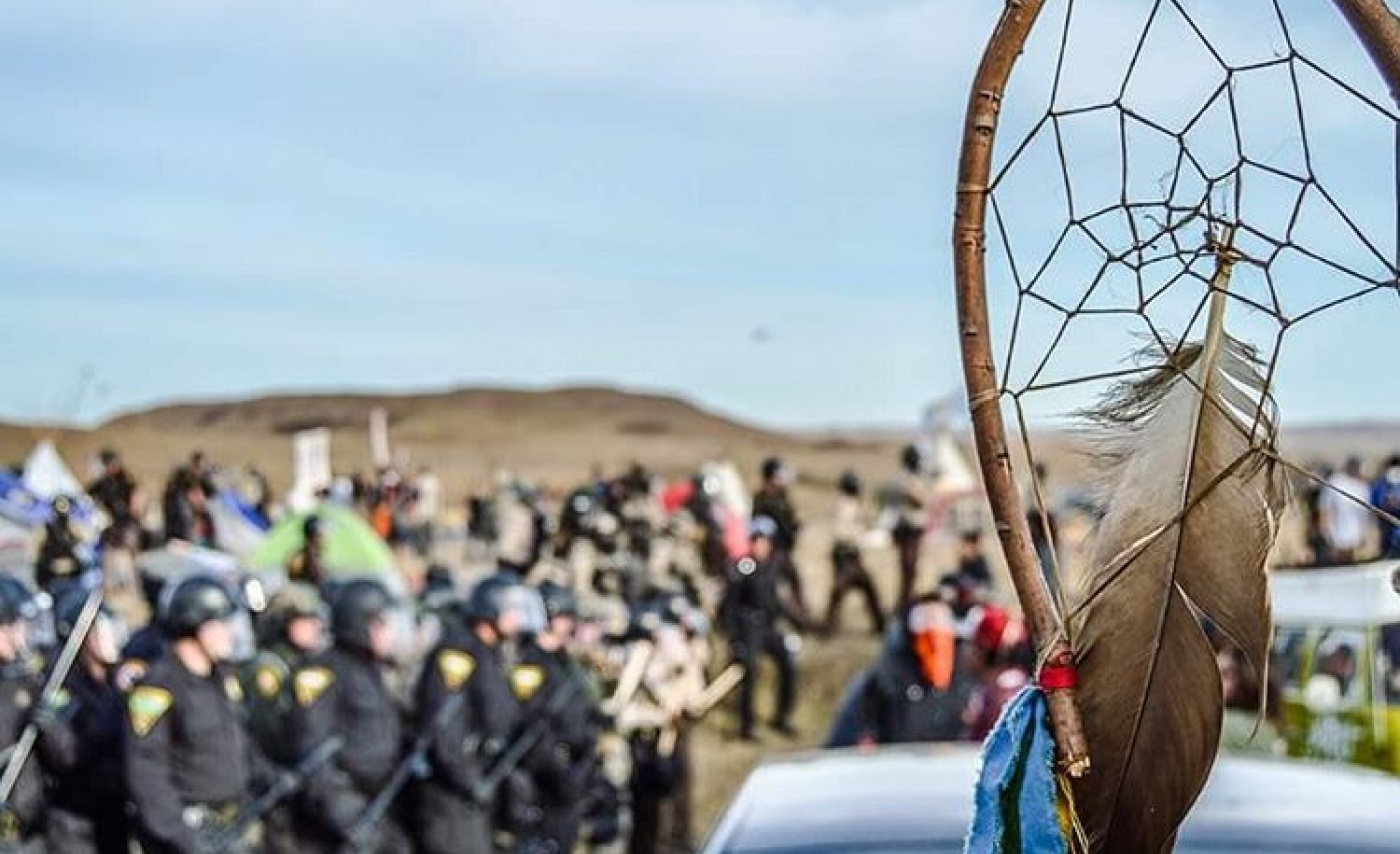
by Deep Green Resistance News Service | Nov 14, 2016 | Lobbying
by Cultural Survival
“We call upon all member states, to condemn the destruction of our sacred places and to support our nation’s efforts to ensure that our sovereign rights are respected. We ask that you call upon all parties to stop the construction of the Dakota Access pipeline and to protect the environment, our nation’s future, our culture and our way of life.”
– Standing Rock Sioux Tribe Chairman Dave Archambault II
The International Indigenous Peoples`Forum on Climate Change (IIPFCC) condemns the construction of the Dakota Access pipeline and stands in solidarity with our sisters and brothers of the Standing Rock Sioux Tribe and all Water Protectors in opposition to this project.
Human Rights and the Indigenous Rights Perspective
The Dakota Access pipeline is being built on the un-ceded treaty lands of the Standing Rock Sioux Tribe, without their free, prior and informed consent, as is described in the UN Declaration on the Rights of Indigenous Peoples in Articles 18, 19, and 32. The pipeline is also being constructed through sacred areas and ancestral burial grounds of the Standing Rock Sioux and other Indigenous Peoples of the area. This massive construction project does not respect the Standing Rock Sioux’s Treaty rights, sovereignty, or their right to self-determination. It is an outright violation of their rights over their lands and resources as Indigenous Peoples, and does not respect the human rights of Indigenous Peoples.
Climate Perspective
The Dakota Access pipeline will transport 470 000 – 570 000 barrels of oil every day, which will release emissions of 101,4 million tonnes CO2, as much as 30 American coal power plants, every year. This is not consistent with the State Parties’ obligations and commitments under the Paris Agreement or the Sustainable Development Goals (SDGs). The continued production of fossil fuels only assures that global temperature will rise well above 2°C in the immediate future and threaten the lives and livelihoods of Indigenous Peoples around the world. The potential for a major oil spill from the Dakota Access pipeline is immediate. The pipeline is scheduled to cross underneath the Missouri River, which is the main source for drinking water for the Standing Rock Sioux Reservation and for millions of people who live downstream. Sunoco Logistics, the operating company of the pipeline, alone has experienced over 200 oil spills in 6 years, and the US had in total over 3300 leaks since 2010, polluting rivers, ground waters, land and air, and both human lives, health and livelihoods has been lost.
The IIPFCC calls upon the US to halt the construction of the Dakota Access pipeline and to enter into serious consultations with the Standing Rock Sioux, and other tribes affected by this project, respecting the right of the Tribes to free, prior and informed consent.
The state owned Norwegian Oil Fund is heavily invested in the pipeline. The IIPFCC calls upon Norway to divest from the Dakota Access pipeline Project.
We also call on all States to ensure the protection of Indigenous Peoples´ territories across the world as a critical action in the implementation of the Paris Agreement and in achieving the SDGs.
Featured image by A. Golden/Flickr.
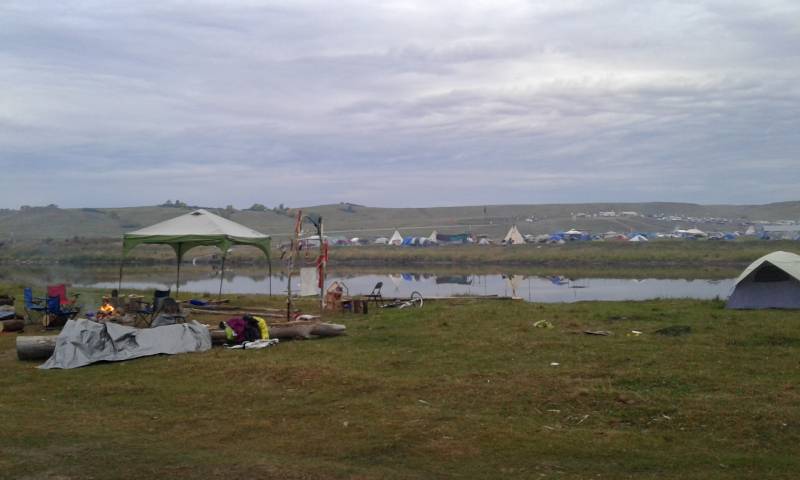
by Deep Green Resistance News Service | Nov 9, 2016 | Culture of Resistance
by Jennifer / Deep Green Resistance
I have traveled to Standing Rock twice now. The first time was on September 16 – 20. On the first trip I went with my mother. We camped at Rosebud and spent a great deal of time in the kitchen preparing food and talking with members of the camp, indigenous and non-indigenous allies. We could hear prayers and drumming in the Oceti Sakown Camp well into the night. The atmosphere was of constant prayer and felt celebratory. There were fireworks on the first night of our stay. I visited Sacred Stone and the “Overflow,” Oceti Sakowan, camps. Between Rosebud and Sacred Stone a women’s lodge was being constructed, with the permission of the elders.
The second trip was on October 29 – November 2. I went with acquaintances and we camped in the Oceti Sakowan. We fed ourselves, and provided our own shelter. The only time I ate outside of our camp was when I went to do dishes at Rosebud. Surveillance was present on the hill overlooking the camp: flood lights, drones, plane helicopter circling. I did not take pictures. The camp itself was much quieter. I attended non violent civil disobedience training, a requirement for all new arrivals. I filled out forms with legal and prepared for the possibility of NVCD action.
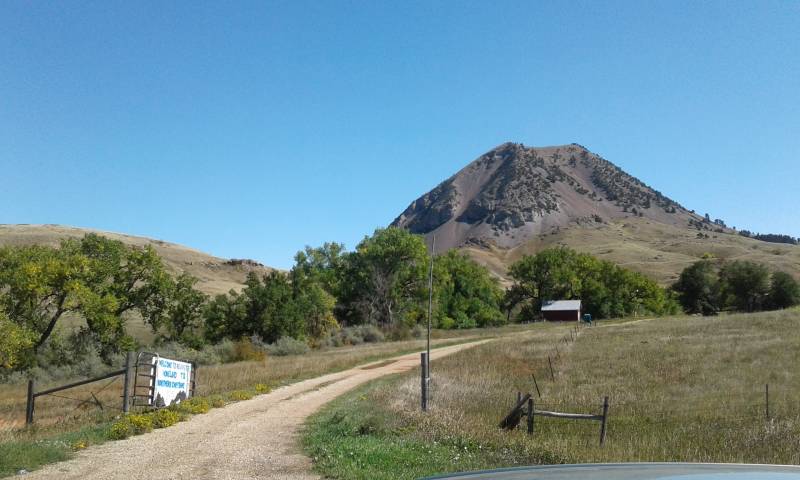
I also went to an orientation for the medics. Currently a Medic tent, herbal/alternative remedy, and a body work tent have been established with a mental health group and center in formation. Meetings for the camp are held every morning and in a truly respectful and democratic manner. All voices are heard. From 2-3 hours of work a day are expected to be given to the collective. I participated in water ceremony by invitation. I gave my drum when it was asked for, to be in sweat lodge. I visited Sacred Stone, and spoke with a keeper of the sacred fire who had just returned to camp, having closed down her life a half a continent away to be at Standing Rock.
Building for the winter was well underway. Between Sacred Stone and Rosebud on the Standing Rock Reservation side of the Cannonball, the women who were building the women’s lodge had returned and were well established; the lodge was complete. Rosebud looked the same physically, but many people who I remembered had left while some remained. I had a brief conversation with a Episcopalian Minister letting me know that 300 faith leaders were answering the call to come to Standing Rock. Over 500 arrived the day after our departure.
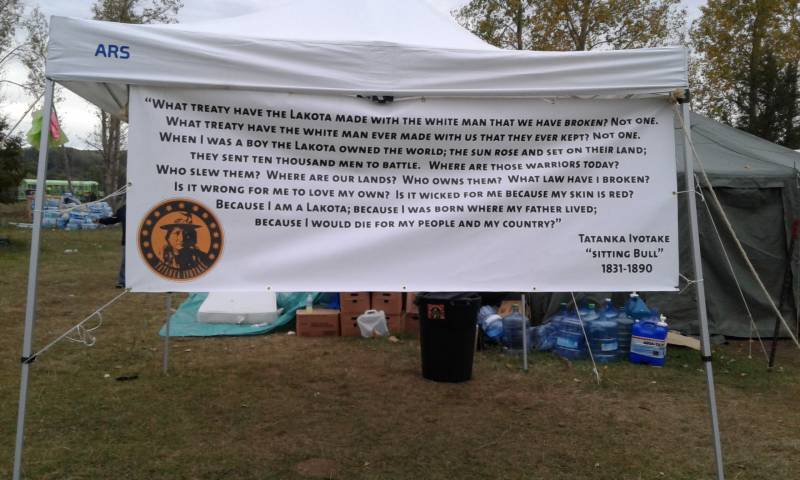
I was physically cold, in pain, and sleep-deprived during the stay. Monday was particularly difficult and windy. Recent tests indicate I most likely have a severe form of arthritis. Fortunately be were camped by some trees and able to create a bit of a wind break. If you are planning to go, be prepared for harsh conditions and be realistic about your limitations and how to deal with them.
I have attended multiple Wednesday evening updates at Four Winds in Denver. I have learned a great deal about the legal and on-the-ground struggles, not only at Standing Rock but historically, by attending updates. These meetings have also led to engagement with an organizing group of women who coordinated Four Directions March and Prayer in solidarity with Standing Rock and on Indigenous Peoples Day (transforming Columbus Day), prayer and ceremony for Murdered and Missing Sisters, and on election day will be holding a Million Mothers March in Denver. I have been able to engage in support work by request and have been able to offer air time through WomynAir and the AM News Magazine on our local community radio station KGNU to increase awareness and notify the public when it is appropriate for them to attend.
In Conclusion: Standing Rock is a functional, resilient community of resistance. Standing Rock is prayer and ceremony and community. If there is anything that I have gathered from having been at Standing Rock it is this. Prayer and ceremony unite the people to the land, air, and water; to each other, to our ancestors, to community, to action. It is my belief, after my experience of being at Standing Rock, that this foundation gives humans the strength and sanity to face ourselves, our communities, life, and to continue to take action in defense of life. Words fail. I will continue to listen.
 Right now, thousands of native people and allies are gathering on the cold plains of North Dakota in an attempt to stop the Dakota Access Pipeline. Under President Obama, such popular movements had a chance—a small chance, but a chance—of success. Under Trump, there won’t be so much leniency, and the road to victory will be much harder.
Right now, thousands of native people and allies are gathering on the cold plains of North Dakota in an attempt to stop the Dakota Access Pipeline. Under President Obama, such popular movements had a chance—a small chance, but a chance—of success. Under Trump, there won’t be so much leniency, and the road to victory will be much harder. Coordinated action of another type could be more effective in protecting the planet. In plain language, I speak of sabotage. Individuals or networks of people conducting coordinated, small-scale sabotage over a widespread area could cripple the fossil fuel system with a minimum of expense, technical expertise, personnel, and risk. It is simple to disappear into the night, and with proper security culture the possibility of capture is remote. We’ve seen how vulnerable this network is; anyone could do this.
Coordinated action of another type could be more effective in protecting the planet. In plain language, I speak of sabotage. Individuals or networks of people conducting coordinated, small-scale sabotage over a widespread area could cripple the fossil fuel system with a minimum of expense, technical expertise, personnel, and risk. It is simple to disappear into the night, and with proper security culture the possibility of capture is remote. We’ve seen how vulnerable this network is; anyone could do this.






